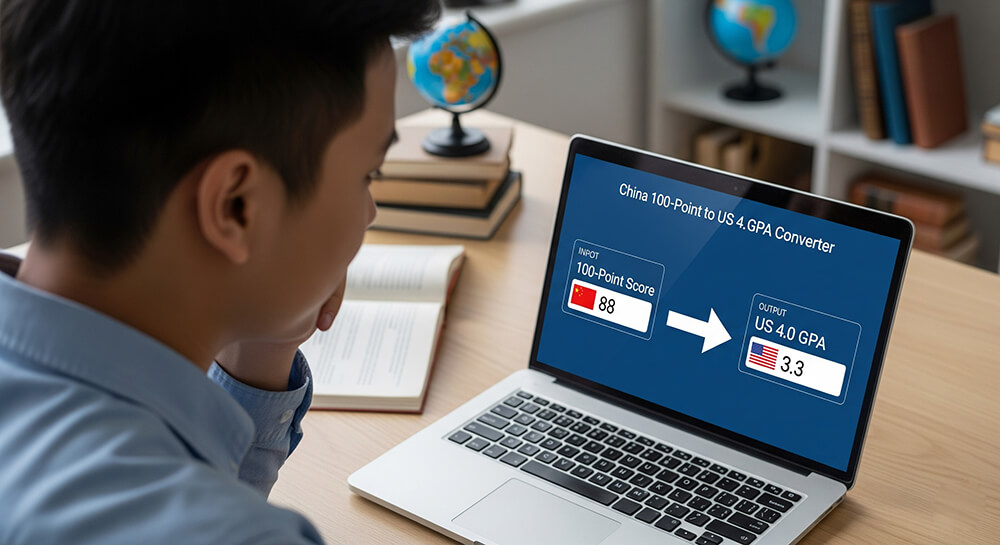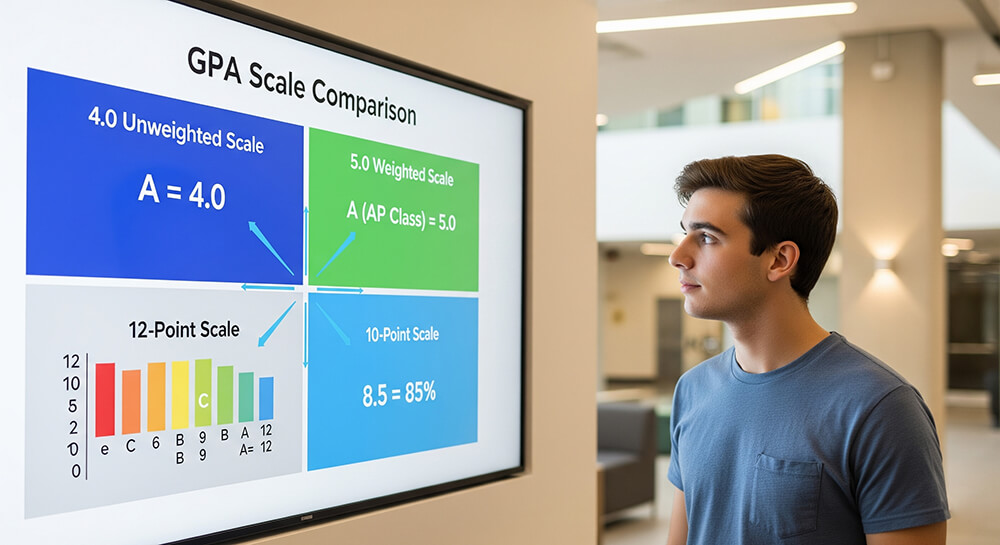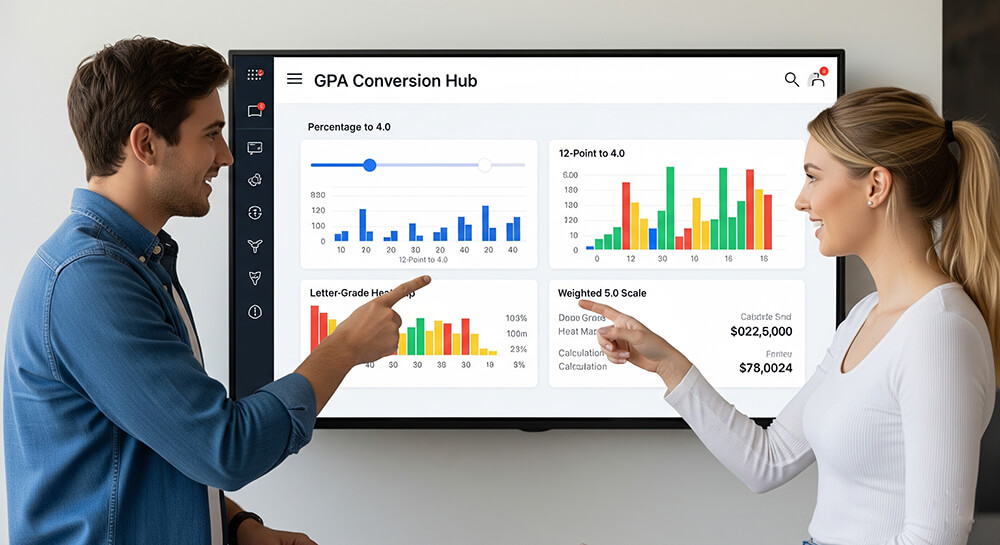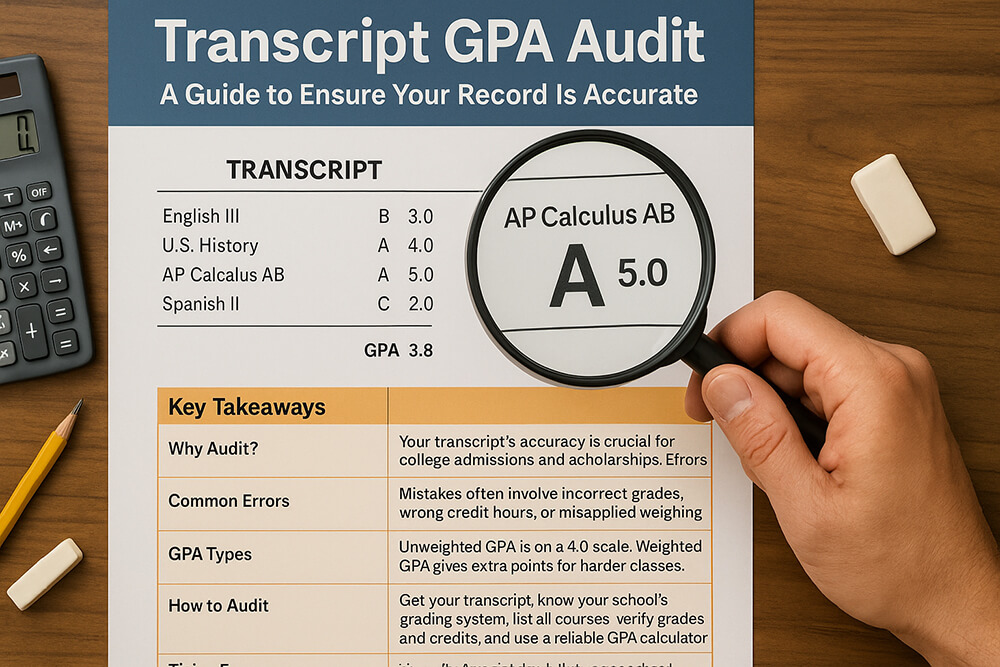Key Takeaways
| Topic | Summary |
|---|---|
| Grading Difficulty | Achieving a score of 90 or above in China is exceptional, often reserved for the top 5-10% of students. This is much harder than earning an 'A' in the U.S. |
| Direct Conversion is Flawed | A simple percentage conversion is inaccurate. A score of 90 in China is not equal to a 4.0 GPA. |
| Professional Services | Using evaluation services like World Education Services (WES) is highly recommended. These services provide credible conversions that U.S. institutions recognize. |
| University Policies Vary | Top Chinese universities like Peking and Tsinghua have unique grading systems. U.S. universities often have specific protocols for evaluating transcripts from these schools. |
| Context is Crucial | Students should provide context with their applications, such as their university's ranking, grading difficulty, and their class rank. |
Understanding the Challenge: China's 100-Point System
China uses a 100-point grading scale. Grades fall into five main categories:
- 优秀 (Excellent): 90–100%
- 良好 (Good): 80–89%
- 中等 (Average): 70–79%
- 及格 (Pass): 60–69%
- 不及格 (Fail): Below 60%
The system is known for its strictness. Getting a grade above 90 is very difficult. This differs from the U.S., where earning an 'A' (90%+) is more common. This is a key point to understand in the history of the GPA.
Why Direct Conversion Fails
A direct percentage conversion does not work. For instance, an 85 in China is a very good grade, but converting it directly would result in a 'B' in the U.S. This fails to reflect the student's true performance. The issue is rooted in GPA inflation vs. deflation. Chinese universities practice grade deflation, meaning high grades are awarded sparingly. In contrast, U.S. universities often experience grade inflation. Understanding the pros and cons of different GPA scales is vital.
Common Conversion Methods for Chinese Grades
There is no single, official conversion method. This leads to confusion. Several approaches exist:
- Aggressive Method: This method assigns higher GPA values. For example, an 85% might be a 3.0 GPA. Students sometimes use this for self-reporting, but universities may not accept it.
- Conservative Method: This method uses lower GPA values. An 85% could be seen as a 2.0 GPA. This is less common but may be used by some employers.
- Professional Evaluation Services: Services like WES use their own systems. They typically place an 85% at around a 3.0 GPA. This is the most widely accepted method. A percentage to 4.0 GPA conversion tool can offer a preliminary estimate.
How Top Chinese Universities Handle Grades
Elite universities in China have their own specific standards.
- Tsinghua University: Switched to a letter-grade system in 2019 to better align with international standards.
- Peking University: Uses a formula to convert scores: GPA = 4 - 3(100-X)²/1600. This nonlinear method reflects the difficulty of achieving high scores.
- Other Top Universities: Fudan and Shanghai Jiao Tong University maintain rigorous 100-point systems where A+ grades may require a score of 95 or higher.
These variations highlight why a one-size-fits-all approach is inadequate. Learning about different types of GPA scales can provide more context.
A Look at Other International GPA Conversions
China is not the only country with a unique grading system. Understanding other conversions can provide perspective.
- India: Many Indian universities use a 10-point GPA scale. An Indian 10-point to 4.0 scale conversion guide is necessary for these students.
- United Kingdom: The U.K. uses a class-honours system. A guide on the UK class system to 4.0 GPA conversion is essential.
- Canada: The province of Ontario uses a 12-point system. Students from there would need an Ontario 12-point to 4.0 GPA conversion guide.
Tools to Help You Calculate Your GPA
Many online tools can assist with GPA calculations. A college GPA calculator helps current students track their progress. For long-term planning, a cumulative GPA calculator is invaluable. High school students can use a high school GPA calculator to prepare for college applications. These tools simplify the process described in a how to calculate GPA guide.
Special GPA Scenarios to Consider
Students often face unique academic situations. It's important to know how these affect your GPA. For example, incomplete grades can impact your GPA, so having a plan is crucial. Similarly, understanding how pass/fail grades impact your GPA is important, as these courses are treated differently. For students who have studied abroad, a study abroad grades GPA integrator can help combine transcripts.
Weighted vs. Unweighted GPA: Does It Matter for China?
U.S. high schools often use weighted GPAs to give more value to advanced courses. A gpa weighting guide for honors and AP classes explains this system. However, Chinese transcripts are typically unweighted. When converting grades, it is best to calculate the unweighted GPA first. Understanding the difference between weighted vs. unweighted GPA helps you represent your academic achievements accurately.
Practical Tips for Chinese Students
Navigating the conversion process can be challenging.
- Use Professional Services: Submit your documents to a service like WES. This provides a credible evaluation that U.S. universities trust.
- Provide Context: Include a school profile with your application. Explain your university's grading system and its reputation.
- Highlight Your Rank: If possible, include your class rank. This shows your performance relative to your peers.
- Audit Your Transcript: Before submitting, perform a transcript GPA audit to check for errors.
How U.S. Universities Interpret Your Chinese Transcript
Many U.S. admissions offices are familiar with Chinese credentials. They often have internal guides for top schools like Fudan and Tsinghua. They look beyond the numbers to understand the rigor of your institution. They may use a tool like a last 60 credits GPA calculator to focus on your more recent performance. The goal is to create a fair comparison between applicants from different educational systems.
Frequently Asked Questions (FAQ)
1. What is the most common way to convert a Chinese GPA to a U.S. 4.0 scale? The most accepted method is to use a professional credential evaluation service like WES. They provide a standardized report that U.S. universities recognize.
2. Why is a 90% in China not a 4.0 GPA in the U.S.? The grading culture in China is much stricter. A score of 90% is achieved by only a small fraction of students and represents exceptional performance, whereas in the U.S. it typically corresponds to a standard 'A' grade.
3. Can I just use an online calculator to convert my GPA? While an online percentage to 4.0 GPA conversion tool can give you a good estimate, it is not official. For university applications, you must use a professional evaluation service or follow the specific instructions of the university you are applying to.
4. What if my university has its own unique grading system? If your university, like Peking University, uses a specific formula, you should include this information in your application. Professional evaluators and experienced admissions offices will likely be familiar with it.
5. Do I need to convert my Gaokao score to a GPA? No, the Gaokao (National College Entrance Exam) is separate from your GPA. It is an entrance exam score and should be reported as such, not converted into a GPA.










